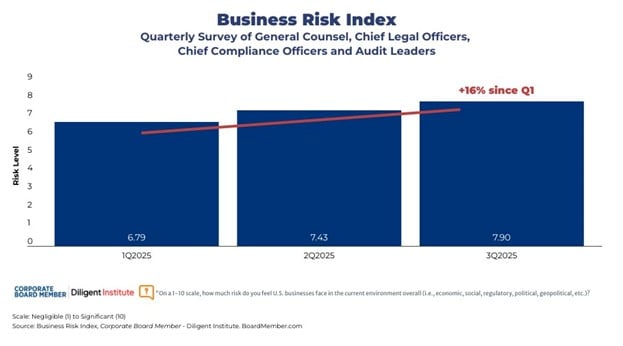In the media, the C-suite, and the boardroom: culture is everywhere. With prevailing challenges to slow the revolving door of talent, redesign the workforce of the future, and incorporate what we learned during global crises, it is natural that culture is once again atop the agenda.
Research has long affirmed the causal relationship between organizational culture and company performance. Since long-term corporate health and performance is at the heart of the board’s charge, it makes sense for boards to take an interest in company culture.
Too often, however, the board’s role in influencing culture is confined to the realms of compliance, ethics and investment. While certainly these are important areas and relevant for boards, the board’s role in shaping culture goes beyond that. In fact, the board shapes culture immediately upon its selection of CEO. Thereafter, its actions signal what is expected and tolerated from management—and thus, the entire organization.
The buck stops with the board.
Rather than passively accepting or reinforcing culture, I advise board members to play a more active role in shaping culture. Why? Culture starts with the actions of its leaders, including the board. The board is also accountable for results—both financial performance and the decisions and actions engendered by organizational culture.
If the buck stops with the board, then it should also start there.
The board has an advantage.
With an average tenure of about 10 years, board members often outlast the C-suite, whose tenure has averaged roughly half that time. This means board members can influence the direction and tenor of the organization for a longer term than most CEOs. Independent directors also have perspective. They hear from stakeholders and can experience the culture without getting bogged down in it. Having both time and independence, the board has an advantage. Exploiting this advantage—by playing a more active role in shaping culture—can impact corporate health and the sustainability of the organization.
Culture should not be an amorphous blob.
Every organization has a culture. And it can be hard to describe. It’s that “je ne sais quoi.” Yet, culture should not be an amorphous blob. Itself a strategic imperative, culture requires deliberate action and attention. Otherwise, leaders risk having a culture that does not support its future ambitions, (as I’ve discussed here and here.)
Three ways the board can shape culture:
1) Put culture on the agenda. Literally. Guide definition and development of the desired culture. Ideally, obtain an unbiased, outside view of what the culture really is. Include key elements of culture on the Strategic Dashboard used by management and the board to monitor progress in advancing strategic priorities. This elevates the culture conversation to its rightful place as a key driver of results.
2) Be the culture you expect and need. Align board actions with expected cultural norms for the rest of the organization. This includes how you work, the types of candidates the Board attracts (and accepts), and what happens when directors or management fail to honor expected cultural norms. Routinely evaluate how well the board is living and breathing the expected culture.
3) Share responsibility—without abdicating accountability. Management shares responsibility for nurturing the desired culture and building the internal infrastructure to support it. Good governance requires the board to be accountable for the culture and its impact on performance. For example, in its oversight capacity, the board supports whistleblowers. Give internal and external stakeholders a clear process to raise issues and be heard, safely. And of course, the board must remain sufficiently out of the weeds as to maintain its independence.
Culture is everywhere and the stakes for solving the culture puzzle seem to be rising. Culture starts with the actions of its leaders. In the board’s case, this extends beyond simply selecting and installing a CEO. In fact, the role of the board gives it an advantage in defining, nurturing and monitoring the culture that’s needed to achieve the company’s objectives.
Learn more about solving the culture puzzle in the “Elements of Culture©” tool (p. 189) in my book, Charting the Course: CEO Tools to Align Strategy and Operations. For more about the “Strategic Dashboard©” tool, see p. 107.




